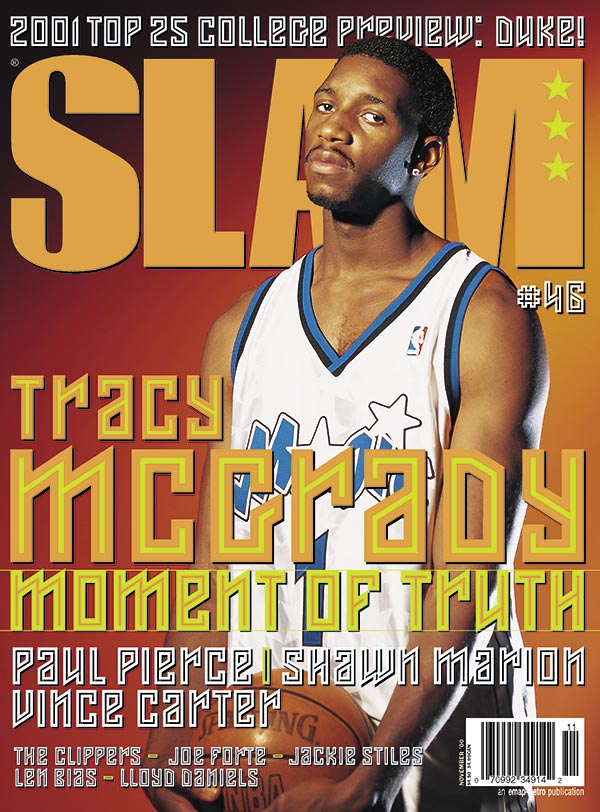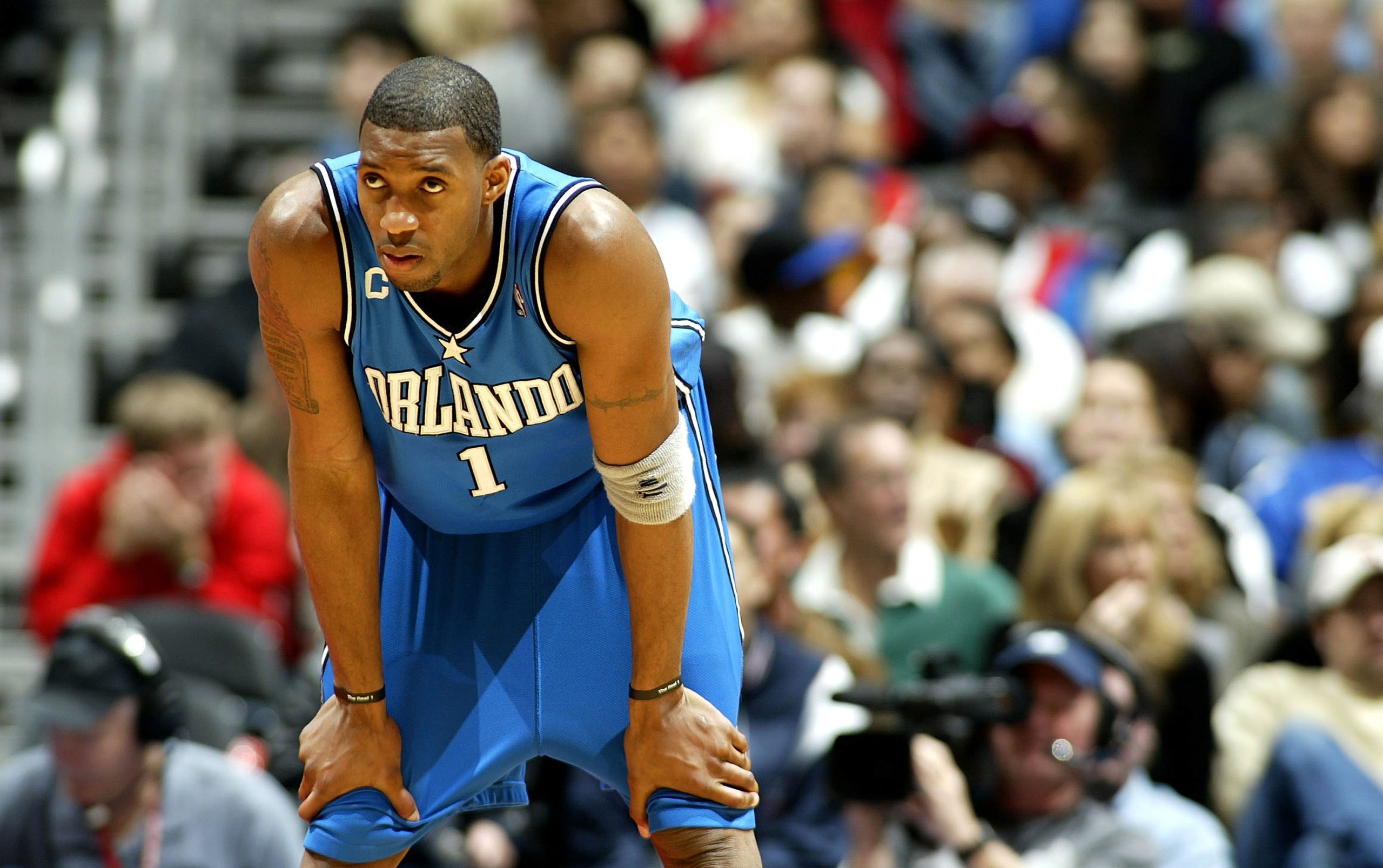For three decades we’ve covered many amazing basketball characters, but some stand above the rest—not only because of their on-court skills (though those are always relevant), but because of how they influenced and continue to influence basketball culture, and thus influenced SLAM. Meanwhile, SLAM has also changed those players’ lives in various ways, as we’ve documented their careers with classic covers, legendary photos, amazing stories, compelling videos and more.
We compiled a group of individuals (programming note: 30 entries, not 30 people total) who mean something special to SLAM and to our audience. Read the full list here and order your copy of SLAM 248, where this list was originally published, here.
Watch this game long enough and the awareness sneaks up on you. You start to understand how the spotlight narrows in hindsight, how the space for competing narratives is diminished by time. Turns out there’s only so much mental space available to recall the players who define eras. The result, as far as our NBA memories go, is that even some of the game’s greatest and most breathtaking careers can be nudged out of the light of immediate recall. We haven’t forgotten them, exactly. We just need to be reminded.
So here’s your reminder about Tracy Lamar McGrady Jr.

Seven-time All-Star, two-time scoring champ, 2017 Hall of Famer. A preps-to-pros pioneer whose career crossed eras: came into the League a year behind Kobe, made his first All-Star Game three years before LeBron arrived, dropped buckets on Jordan in Washington, KD in Seattle and CP3 in OKC. His peak, when it came in the early-mid 2000s, was crazy, a five-year run with the Magic and Rockets in which he averaged 27.6 points, 6.8 rebounds and 5.3 assists per. In that extended moment, T-Mac was just about the last guy any NBA defender wanted to see with the ball in his hands.
The peak being 20 years ago now, the aforementioned narrowing of the spotlight hasn’t done McGrady any favors. The MVP winners in those years were guys named Iverson, Duncan, Garnett and Nash, a list that (obviously) doesn’t even include at-or-near-prime Shaq, Kobe and LeBron. The NBA’s top tier was crowded as hell in the first few years of the new millennium. Just know this: Tracy McGrady belonged in the same breath as all of them.

The legend began one summer week in New Jersey in 1996, when a long, skinny Florida kid with no national rep landed at the proving ground of adidas ABCD Camp. By the time that highlight- filled camp week was over, McGrady was the most buzzed-about player in the ’97 class. The college coaches who hadn’t heard of him a week earlier soon learned they needn’t have bothered learning his name. His decision—choose a college by signing day or sign with adidas for $12 million and head to the Draft—ended up being an easy one.
The appeal was still mostly potential when Toronto made McGrady the ninth pick of the ’97 Draft, where he joined the Raptors—and, a year later, was joined by his far-removed cousin and fellow Floridian Vince Carter. A lanky 6-8 bundle of unpolished talent, McGrady was slow to make an impact and quickly overshadowed by his high-flying distant relative. But by the end of his third season, when McGrady emerged to the tune of 15.4 ppg and started giving optimistic Toronto fans visions of a new-millennium Mike and Scottie, he decided he had no interest in sidekick status. T-Mac was ready to be a star.
A free-agent move back to his home state gave him the chance. It’s hard to believe in retrospect that he spent just four seasons in Orlando, where he averaged better than 28 ppg—including League highs of 32.1 ppg in ’02-03 and 28 ppg in ’03-04—got the first of three solo SLAM covers, and made that star-spangled No. 1 jersey iconic. The numbers were undeniable and the highlights ridiculous—he practically made the off-the-backboard self-alley-oop a signature move—but, lacking an elite supporting cast, his individual achievements never led to postseason success.
He tried to find it in Houston, where he landed after a trade in the summer of 2004 and teamed with Yao Ming, giving him the All-Star big man he’d lacked his entire career. But injuries curtailed the partnership, and McGrady’s numbers diminished throughout his five full seasons with the Rockets. After brief stints with the Knicks, Pistons, Hawks and Spurs, and a season in China, he retired in 2013.
Today, Tracy McGrady’s legacy and impact are clear. An icon of the preps-to-pros era. A lethal scorer and one of the toughest finishers in NBA history. Owner of an adidas signature line (and two KICKS covers to go with it) that combined innovative design and on-court performance as well as any in his era. Post-playing gigs with ESPN and Showtime, plus the founding of the trailblazing Ones Basketball League. And yes, that 2017 HOF enshrinement, an honor that some observers, blinded by ringzzz culture, questioned the inevitability of. They shouldn’t have. The résumé is beyond question, the numbers etched in stone and the highlights burned into the memories of anyone lucky enough to be watching.
Photo via Getty Images. Featured image by Keith Major.
The post THE 30 PLAYERS WHO DEFINED SLAM’S 30 YEARS: Tracy McGrady appeared first on SLAM.


